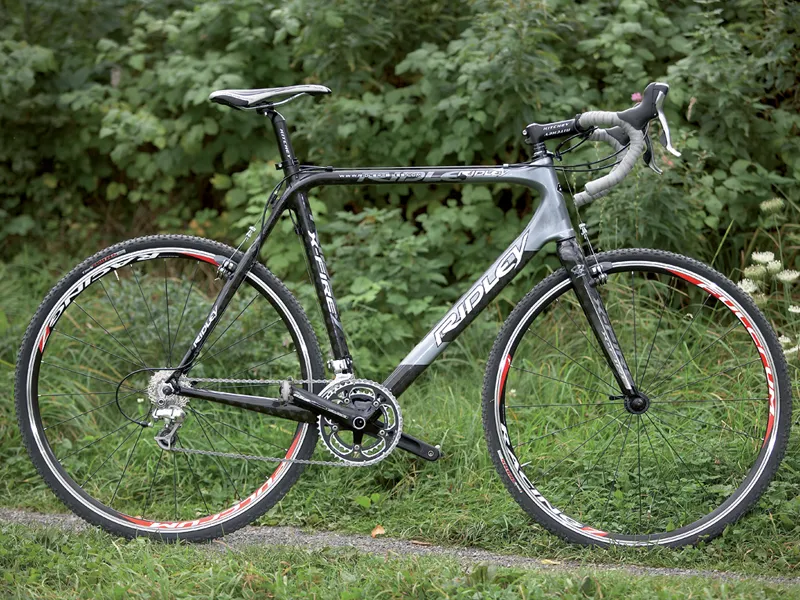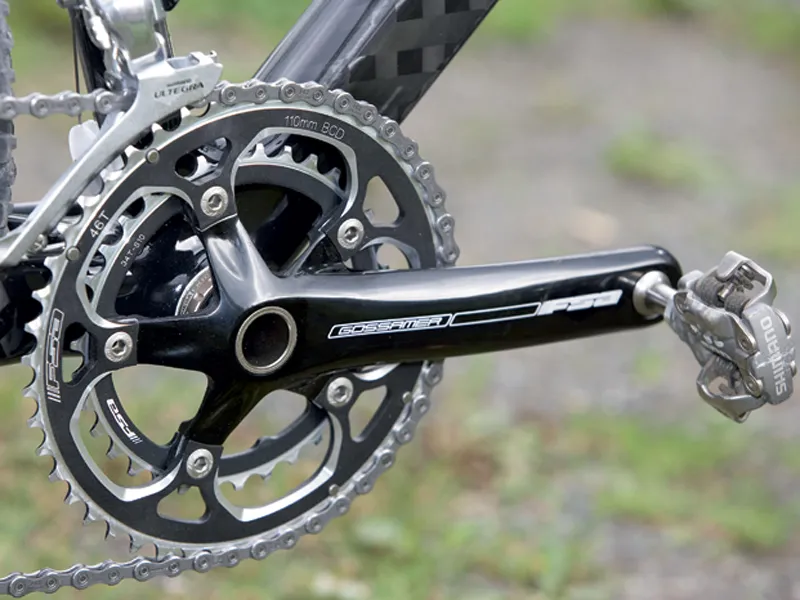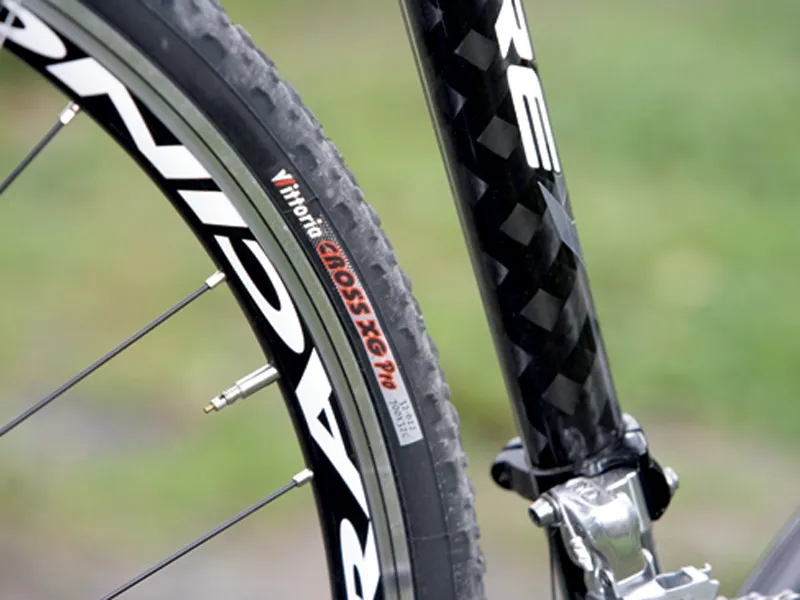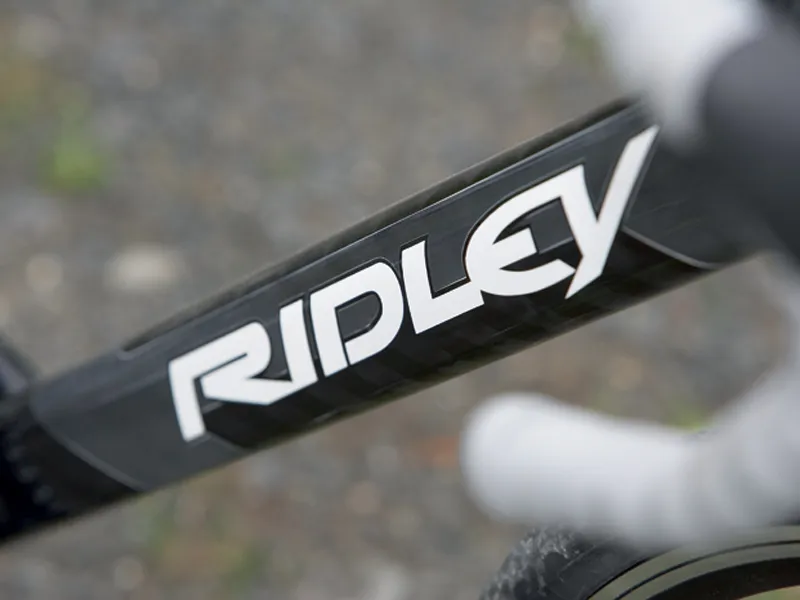Bunnyhopping, getting muddy, falling off... Ex-pro Marcel Wüst relives his cyclo-cross childhood as he puts the Ridley X-Fire to the test.
Junior days seem like ancient history now but I can still remember doing winter training with my club. Most of it was done off-road in the local forests, and this was back in the dark ages, before there were such things as mountain bikes. To adapt our summer road bikes, all we did was change to a fixed wheel with the relatively small ratio of 42/19 and add some sturdy "diamond profile" cyclo-cross tyres. The tyres were a great precaution against punctures, but man, did they make the going tough.
I've been a fan of cyclo-cross since those days and was lucky enough to be invited to commentate on the World Championships at St Wendel in 2005. It was there that I developed an interest in cross gear, so when Procycling asked me if I'd like to test a top cross bike, I jumped at the chance. It didn't take me long to decide where to do the test, either... The local forest I used to wreck my bikes in as a kid is still standing and most of the tracks remain the same. It seemed a fitting location for my first cross bike test.
Frame: Good position makes for responsive ride
Straight off, the X-Fire felt like a bike that wanted to be pushed to its limits. Getting on it was easy and its geometry encouraged me into a great riding position thanks to a slightly shorter-than-usual top-tube. Also contributing to the excellent cross riding position was the difference in height between the saddle and the bars. This was much less than you'd find on road bikes, which aim to provide a low, aerodynamic position.
This relatively upright riding position made it easy for me to shift my weight around, which in turn enabled me to stay in control of the bike regardless of what the forest track threw at me. For the steep, downhill sections I was able to move all the way to the back of the saddle and still remain in contact with the brake levers, again thanks to the shorter top-tube. When I moved forward to sprint up a short 35 per cent incline, the bike maintained good traction even when I was out of the saddle. I gave the X-Fire over a minute's worth of pedal pounding in a seated position to see how it would hold up. It proved to be very responsive and yet was also reasonably comfortable when the going got rough.
Nowadays you can bake carbon frames into all sorts of shapes and Ridley have taken full advantage of this fact when deciding how best to optimise the design of this cross frame. For example, the underside of the top-tube has a rounded-off, flat section to facilitate comfortable and easy carrying, while the chainstays are shaped to ensure as little mud as possible sticks to them. In a similar vein, the down-tube diameter varies according to the frame size, so the smaller the frame, the thinner the tube. This ensures the frame is as easy to grab as possible. The larger down-tube on the bigger frames also provides extra stiffness to accommodate strong riders. Obviously in terms of cross usability, the bike's 24 ton carbon monocoque frame doesn't do it any harm either - a frame that light has got to be easy to lift.
One of the key differences between cross and road bikes is the bottom bracket. On a cross bike they are generally higher than that of a road bike. I discussed this with former German cyclo-cross champion Jörg Arenz to get the inside line on optimum positioning and he commented that Ridley bottom brackets tended to be a little too high for his liking.
Ride: Height is right
My experience of the X-Fire didn't bear out his criticism and on further investigation I realised why. European cyclo-cross racing has changed in style over the years. It used to be all about charging through ankle-deep mud. These days it's much more high speed and technical. After feedback from their pros riders, Ridley decided to lower the X-Fire's bottom bracket by 3mm to accommodate the shift in style. It's no secret that my cross technique isn't quite up to championship standard these days. Even so, when it came to jumping back on the bike, I was able to do so smoothly. Had the bottom bracket been any higher, this would surely have been more difficult, so it seems with the X-Fire design, Ridley are keeping abreast of the sport's evolution.
Keeping your cables mud-free is always going to be a challenge on cyclo-cross equipment. On the X-Fire, both the derailleur cables are routed along the upper side of the top-tube along with the rear brake cable, putting them as far from the sticky stuff as possible. In order to make this routing effective, the front derailleur cable makes a 180° loop around a cable router positioned at the bottom of the seat-tube just above the bottom bracket. Despite this lengthy detour, I always found the gear shifting to be smooth during the test. The 4ZA CB2 brake cable was positioned in a cable hanger just to the side of the headtube, and I found that I needed to pull on the front brake pretty hard to get it to work. Once working, they performed outstandingly, but when it comes to winter races with subzero temperatures and numb fingers, I'd prefer a smoother action and better modulation.
The X-Fire's FSA Gossamer Cross crankset went well with the overall look of the bike and the 46/34 chainrings provided a suitably broad gear ratio range to get me over the lumps and bumps of the forest. A full carbon 4ZA fork - specially designed for this bike - provided plenty of stiffness, comfort and control, and proved that the two companies work really well together. For me, other components on a cross bike, such as the saddle, seatpost, stem and bars, are not so important in terms of overall performance as the nature of the racing means you're constantly going all-out. The technical nature of bunnyhopping, getting on and off, and hard-out accelerations means it's the frame and wheels that make the most difference to a bike's performance.
The Fulcrum Racing 7 wheels that came with the X-Fire weren't the lightest, which meant that the bike wasn't jaw-droppingly dainty when I lifted it. That said, they were perfectly suited for their purpose; they have oversized hubs with cylindrical bearings and a low-profile aluminium rim. The test bike's front wheel had 20 straight spokes, while the 24 back-wheel spokes were crossed three times on the cassette side and straight on the outside. With easy acceleration and good feedback from the ground, you couldn't ask for much more. The Vittoria Cross XG Pro tyres were a good choice for my forest tracks. Inflated to just under five bar, they stuck to the ground like glue and made sure I was always in control.
Did I say always? There was one point during the test when I was hammering downhill and had to jump across a little stream. My cross skills let me down and I couldn't get the Ridley back on track. This presented me with an immediate choice: crash head-on into a big wooden fence or squeeze the brakes as hard as I could and suffer the consequences. I chose the latter and came away with a sore shoulder and a few scratches, while the grass hanging from the side of the brake lever gave the bike a vaguely Hawaiian look.
There's no doubt that the X-Fire is an attractive bike, but it's comforting to know that Ridley have got their priorities right. A sloping top-tube might look slicker on the X-Fire, but its horizontal geometry makes it easier to carry on the shoulder, giving performance the edge over looks. Add a few nice touches such as a replaceable rear mech hanger and it's difficult to resist. My time on the X-Fire got me thinking that I should get a cross bike for the winter. Now I just need to make some room in the garage for another bike...
Summary
Ridley have taken great care to ensure the X-Fire delivers exactly what is needed from an all-terrain bike using excellent componentry in a great-looking package. The carbon frame is sure to satisfy the fussiest rider and the relatively upright riding position means you'll always be in control. Five out of the last six World Championships have been won on Ridley bikes. That's an impressive pedigree and a tough act to follow. If you fancy a change from a mountain bike this winter, the X-Fire is well worth a try. I did, and loved it!




